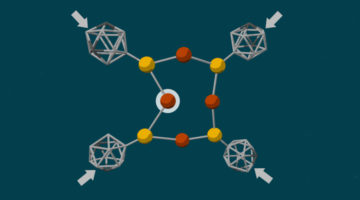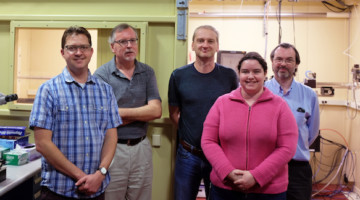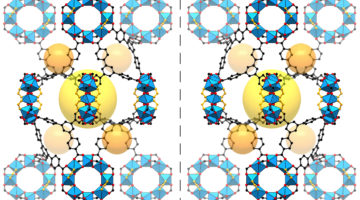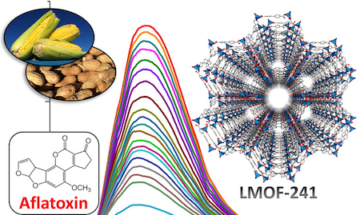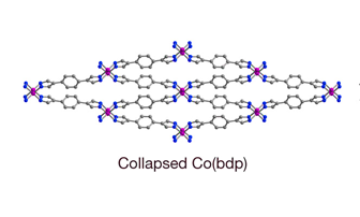An international team has developed a robust material that can selectively take in toxic sulfur dioxide gas at record concentrations and preserve it for use in chemical production. The researchers verified its performance using a combination of techniques that included x-ray experiments at the ALS. Read more »
A 2D Lattice of Molecular Qubits for Quantum Computing
Researchers developed a way to build a 2D lattice of molecular-spin qubits (quantum bits of information), with control over qubit orientation and localization. The work enables the integration of molecular quantum-information hardware into the scalable, robust, solid-state architectures needed for performing quantum computation. Read more »![]()
![]()
Molecular Anvils Trigger Chemical Reactions
“Molecular anvils” (diamondoids) were used to trigger chemical reactions using pressure, yielding products that differ from those produced in conventionally driven reactions with the same reactants. The discovery opens up new possibilities for the high-specificity synthesis of valuable but challenging molecules in an environmentally friendly process. Read more »![]()
![]()
New Small-Molecule Crystallography Beamline Achieves First Light
Beamline 12.2.1, the successor to Beamline 11.3.1, achieved first light on December 21, 2017. This new small-molecule crystallography beamline, which will take over the scientific program of 11.3.1, features a number of improvements that will significantly expand the capabilities available to users. Read more »
Hybrid LED Phosphors Combine Performance and Durability
Light-emitting diodes (LEDs) last a long time and are very energy efficient. However, white LEDs currently rely on phosphor materials doped with rare-earth elements (REEs) that are increasingly costly and in short supply. A new class of hybrid phosphor materials shows promise as REE-free alternatives. Read more »
A New Way to Determine the 3D Structure of Molecules
Researchers have created a sort of nanoscale display case that enables new atomic-scale views of hard-to-study chemical and biological samples. The work could help to reveal new structural details for a range of challenging molecules by stabilizing them inside sturdy structures known as metal-organic frameworks (MOFs). Read more »![]()
![]()
Glowing Crystals Can Detect, Cleanse Contaminated Drinking Water
Tiny, glowing crystals designed to detect and capture heavy-metal toxins such as lead and mercury could prove to be a powerful new tool in locating and cleaning up contaminated water sources. The crystals function like miniature, reusable sensors and traps, and are known as luminescent metal-organic frameworks, or LMOFs. Read more »
Luminescent MOFs for Mycotoxin Detection
Crystal diffractometry at ALS Beamline 11.3.1 helped scientists develop and understand a new, highly sensitive luminescent metal–organic framework for mycotoxin detection. Read more »
On the Road to ANG Vehicles with Increased Driving Ranges
An international team of researchers, using gas adsorption studies, in situ powder x-ray diffraction, and single-crystal x-ray diffraction, showed that there is a way to develop a new flexible metal–organic framework (MOF) material for enhanced natural gas storage on vehicles. Read more »
A Fullerene that Breaks the Rules
Scientists used small-molecule x-ray crystallography to verify and characterize the first non-functionalized fullerene with a heptagonal ring in the cage. This new molecule changes the definition of a classical fullerene and expands the range of structural possibilities for endohedral fullerenes. Read more »![]()
![]()


